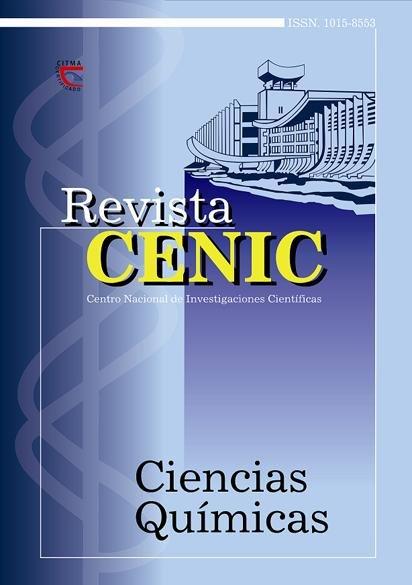Ammonia adsorption on activated carbon
Abstract
Ammonia adsorption on activated carbon was studied. These carbon was obtained from coconut shell carbonaceous precursor, activated at higher temperature gasification with a mixture of H2O and air (Physical activation). In order to study the thermal effect over carbon porosity the solid was outgassed at different temperatures. Micropores Volume Filling Theory of Dubinin and Dubinin-Steokli equation were used to study the porosity of adsorbent and pore sizes determination respectively. It was found that ammonia was physically adsorbed, and only a little quantity of ammonia remained chemically adsorbed when carbon was a second time outgassed at 300 K after it was outgased at 423 K . It was found that in the range of experimental pressure analyzed the adsorbent showed, respect to ammonia adsorption, one heterogeneous porous structure which was formed by two homogeneous porous structures. Ammonia adsorption was fitted with one Dubinin-Radushkievich equation of two terms. The first term described the adsorption in the pores with lower radius and the second one described the adsorption in the pores with higher radius. The ammonia adsorption in the pores of higher radius was fited with BET model which allowed the determination of specific surface.

Downloads
Published
How to Cite
Issue
Section
License
Copyright (c) 2001 Copyright (c) 2001 Revista CENIC Ciencias Químicas

This work is licensed under a Creative Commons Attribution-NonCommercial-ShareAlike 4.0 International License.
Los autores que publican en esta revista están de acuerdo con los siguientes términos:
Los autores conservan los derechos de autor y garantizan a la revista el derecho de ser la primera publicación del trabajo al igual que licenciado bajo una Creative Commons Atribución-NoComercial-CompartirIgual 4.0 que permite a otros compartir el trabajo con un reconocimiento de la autoría del trabajo y la publicación inicial en esta revista.
Los autores pueden establecer por separado acuerdos adicionales para la distribución no exclusiva de la versión de la obra publicada en la revista (por ejemplo, situarlo en un repositorio institucional o publicarlo en un libro), con un reconocimiento de su publicación inicial en esta revista.
Se permite y se anima a los autores a difundir sus trabajos electrónicamente (por ejemplo, en repositorios institucionales o en su propio sitio web) antes y durante el proceso de envío, ya que puede dar lugar a intercambios productivos, así como a una citación más temprana y mayor de los trabajos publicados (Véase The Effect of Open Access) (en inglés).













